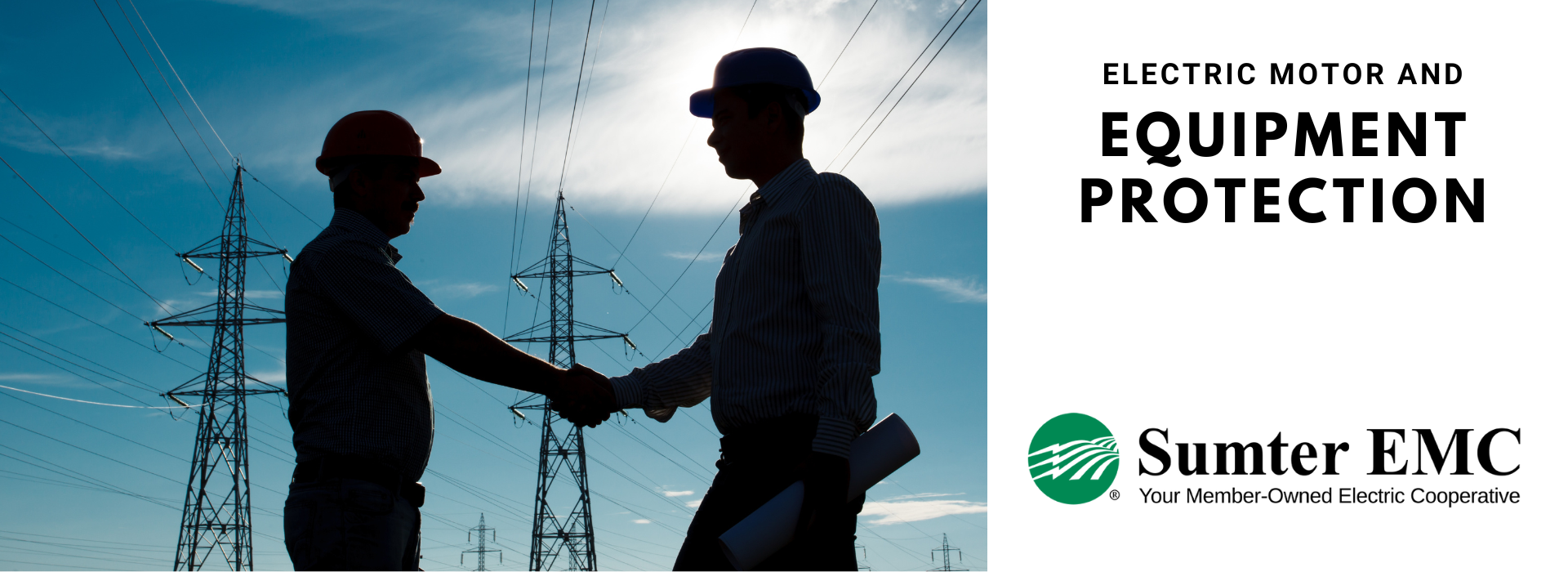
Electric Motor and Equipment Protection
The direction of phase rotation and the continuity of all three-phase currents are guarded carefully. Still, the Cooperative cannot guarantee against accidental or temporary change in phase rotation or phase failure. Therefore, three-phase motors must be equipped with suitable protection against such reversal or phase failure. See the information on Protecting Electrical Equipment below for a complete guide to protection for electric motors and equipment.
The National Electrical Code® (NEC)
The NEC is a publication of the National Fire Protection Association, Inc. The NEC was first published in 1897 and is constantly changing to reflect changes in technology. The purpose of the Code is the practical safeguarding of persons and property from hazards arising from the use of electricity.(1) The local county or city government authority having jurisdiction for enforcement of the Code has the responsibility for making interpretations of the rules, for deciding on the approval of equipment and materials, and for granting the special permission contemplated in a number of the rules.(2) The NEC has become the most widely adopted code in the United States. It is the standard used in all 50 states and all United States territories.(3)
All wiring installation should be performed by a licensed electrician and/or heating and air conditioning dealer in compliance with the NEC and/or local codes.
Steps to Protect Against Equipment and Motor Failure
-
Protect against quick restarts
Momentary power interruption to a central air conditioner or heat pump can result in damage to the compressor. Digital thermostats generally include a feature that will keep the unit from restarting immediately when the power supply is momentarily interrupted and give time for pressures to stabilize before allowing it to restart. Digital thermostats have the added benefit of providing more accurate and reliable temperature measurements and can be installed by your equipment dealer.
-
Protect against low or high voltage
Several products are available that provide protection. They often provide more than one function. A voltage-sensing relay is available that will shut the motor down when voltage falls below or rises above adjustable set points. Installation of this device and the time delay device mentioned above are good protective measures. A solid-state device can be installed on your equipment that protects against all 3 problems: high voltage, low voltage, and quick restarts. Often a device is installed as standard equipment on some new air conditioners and heat pumps that will only protect against low voltage and quick restarts, but not high voltage. Check with your equipment dealer to see what kind of protection you have or need
-
Protect against phase failure, phase reversal, or frequency failure
Devices are available to protect from loss of three-phase compressors and large motors where one or more phases are dead or where the rotation of the equipment is reversed due to two of the three supply phases being reversed.
Some devices provide protection from unacceptable frequency levels as well. Protective devices in this category are generally more expensive and are found more commonly on large commercial motors and compressors. The over-load heaters provided with motor starting equipment may not protect the motor from single-phasing. If the additional protective devices described here are omitted, load conditions exist where a motor is vulnerable to single-phasing. -
Protection against lightning
Secondary lightning arresters are commonly installed on large commercial air conditioning systems. For residential systems, placement of a secondary lightning arrester at the weatherhead, meter base, or service entrance panel will provide some lightning protection for air conditioners and other household circuits. See the Lightning Protection section on the following page for additional information.
-
Protection for televisions and other electronics
A device that is designed to protect electronic equipment against voltage spikes can be purchased for under $50. It senses the momentary surge of voltage that may be caused by lightning strikes near your home. A device with multiple layers of protection will have connections for the power cord, coaxial tv cable, and telephone/DSL lines associated with your equipment to guard against power surges. If this device operates to prevent a significant spike from damaging the electronics, it may need to be replaced. It is neither effective against a direct lightning strike nor will it protect against sustained high or low voltage caused by a damaged distribution transformer.
-
Protection for appliances
There are solid state protective devices designed for window air conditioners, refrigerators, and freezers. They could be used on other appliances as well, but the cost is prohibitive for small appliances. They serve the same three functions: protection against quick restarts, low voltage, and high voltage. They plug in as an adapter, also. Additional protection for appliances can be obtained through proper grounding and the use of secondary lightning arresters.
